

Max Davies
How Audi, BMW, Honda, Mercedes-Benz, and Suzuki started out in Australia, and where they are now
15 Hours Ago
The updated Jeep Compass has a classy new interior and a long list of equipment, but it’s a small SUV priced up against mid-sized rivals.
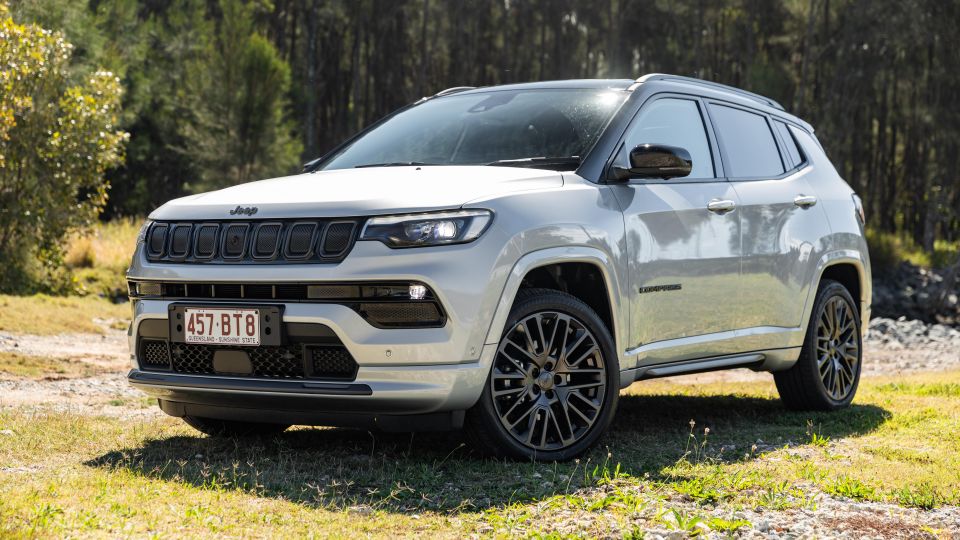


News Editor
New from
$45,950
excl. on-roads

News Editor
New from
$45,950
excl. on-roads


News Editor
New from
$45,950
excl. on-roads

News Editor
New from
$45,950
excl. on-roads
Quickly see how this car stacks up against its competition. Select any benchmark to see more details.
Where expert car reviews meet expert car buying – CarExpert gives you trusted advice, personalised service and real savings on your next new car.
When Jeep introduced the first-generation Compass back in 2007, it seemed like the nadir of the Jeep brand.
Its styling was ungainly, its interior awful, and its dynamics subpar. It was the first Jeep to come with standard front-wheel drive.
To Jeep’s credit, it didn’t throw away the name and has instead kept improving it. First came a facelift and a nicer interior in 2012, then a redesign in 2017. Now, the second-generation model has received a mid-cycle refresh.

The exterior hasn’t changed much – it’s still a pretty handsome SUV, but for the plasticky grille it’s been given. The good news is the interior has gotten a more exhaustive update, and is virtually unrecognisable from the pre-facelift model’s.
There’s also more safety equipment and only minor price increases, despite all the extra kit.
The Compass is a crucial model for Jeep in Australia. It’s Jeep’s entrant in the deeply competitive small SUV segment. It also has to do some heavy-lifting for the brand locally, with the larger Cherokee a niche player at best, especially now that it’s V6-only.
Will the Compass make you want to say “I bought a Jeep”, or will you want to hold back?
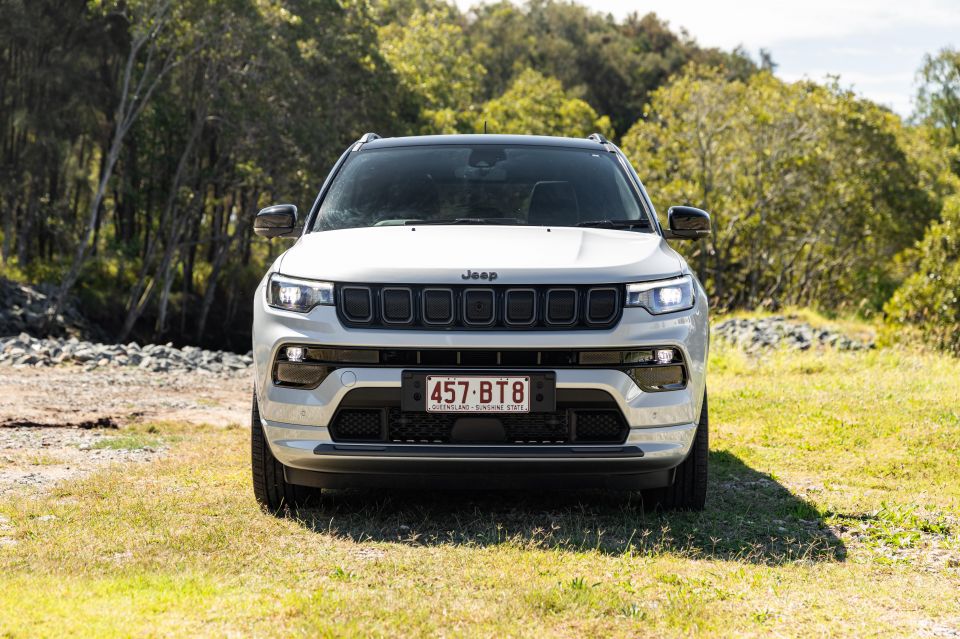
Our tester feels about $5000 overpriced.
The 2022 Jeep Compass S-Limited is priced at $46,950 before on-road costs. You’ll pay an extra $645 for most paint finishes, including our Minimal Grey, while ours also came with the S-Limited Premium Package that costs $2950.
All up, our tester cost $50,545 before on-roads. That means you’re looking at $54,956 drive-away based on a Sydney postcode.
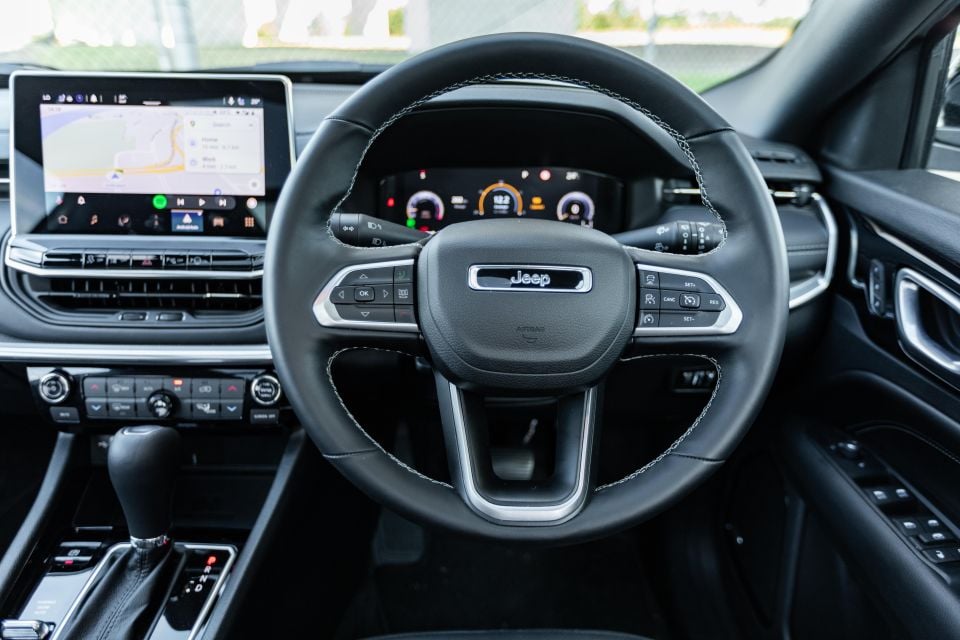
Other fully-loaded small SUVs include:
All prices exclude on-road costs unless specified (D/A)
What makes the Compass S-Limited an even tougher ask is the fact it’s priced up against up-spec models in the mid-sized SUV segment.
You can get the redesigned Mitsubishi Outlander Exceed AWD for $47,990, the facelifted Subaru Forester 2.5i-S for $44,190, or a Toyota RAV4 Cruiser Hybrid for $46,415.
Then there’s Jeep’s own Cherokee Limited, which has most of the features of our tester plus a V6 engine and a price tag scarcely higher at $50,450 before on-roads.
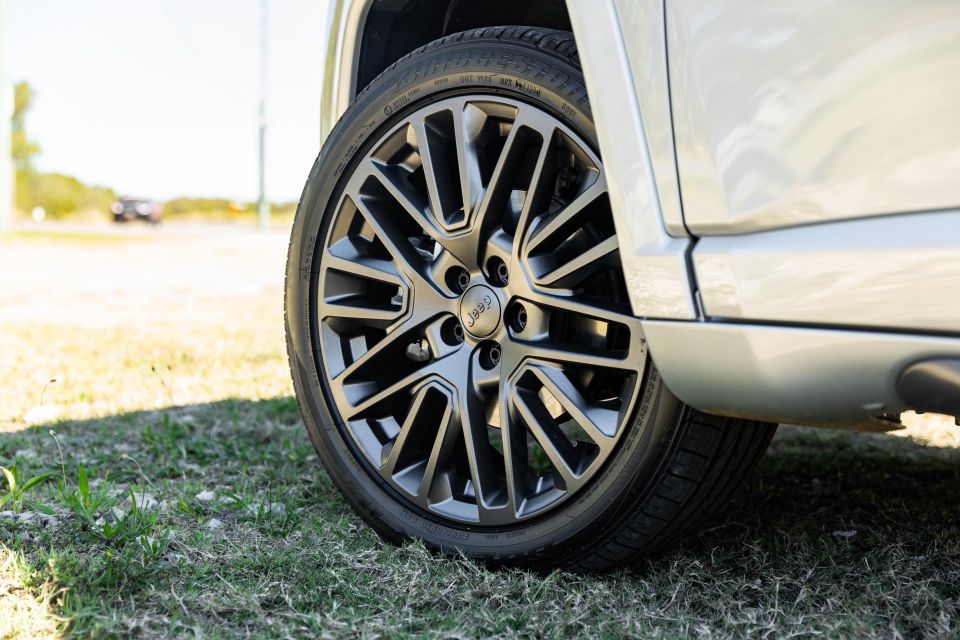
The Compass is also edging ever closer to entry-level small luxury SUVs from European brands, like the Audi Q3 and Volvo XC40. They might have shorter features lists, but they have more cachet and typically punchier, more efficient engines.
The news isn’t much better lower in the model range. Even the entry-level, front-wheel drive Launch Edition is pricier than key rivals, opening at $37,950 before on-roads. That’s about $5000 more than a comparably specified Seltos Sport+, or $3000 more than a comparably specified Eclipse Cross Aspire.
Given American automakers’ traditional emphasis on bang-for-buck and metal for the money, the pricing of the Indian-built Compass seems too ambitious and puts it up against larger SUVs.
Wouldn’t it be better for the Compass to be a big fish in a small pond by offering a large-ish small SUV package for the price of a regular-sized small SUV?

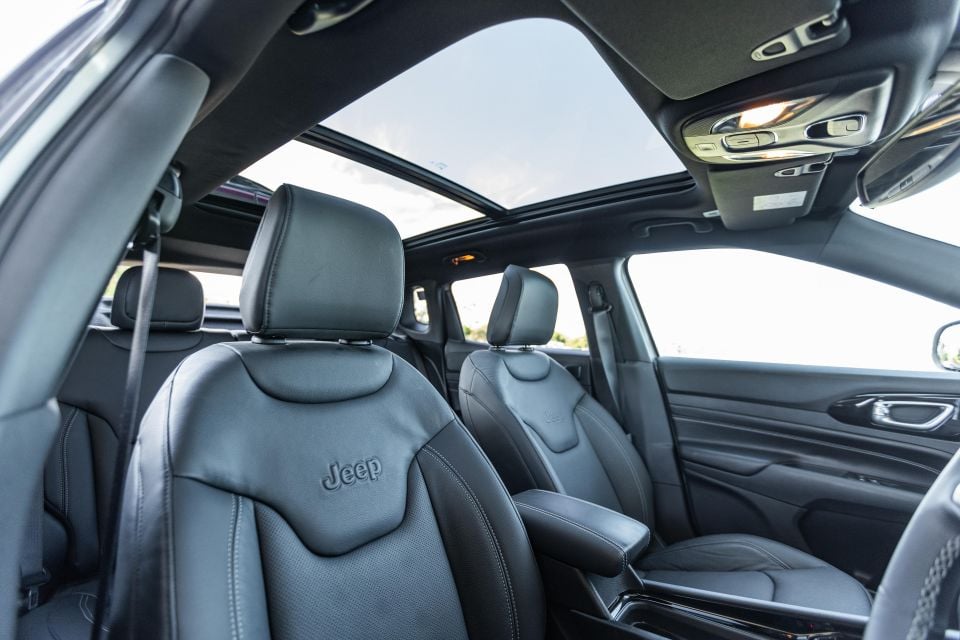
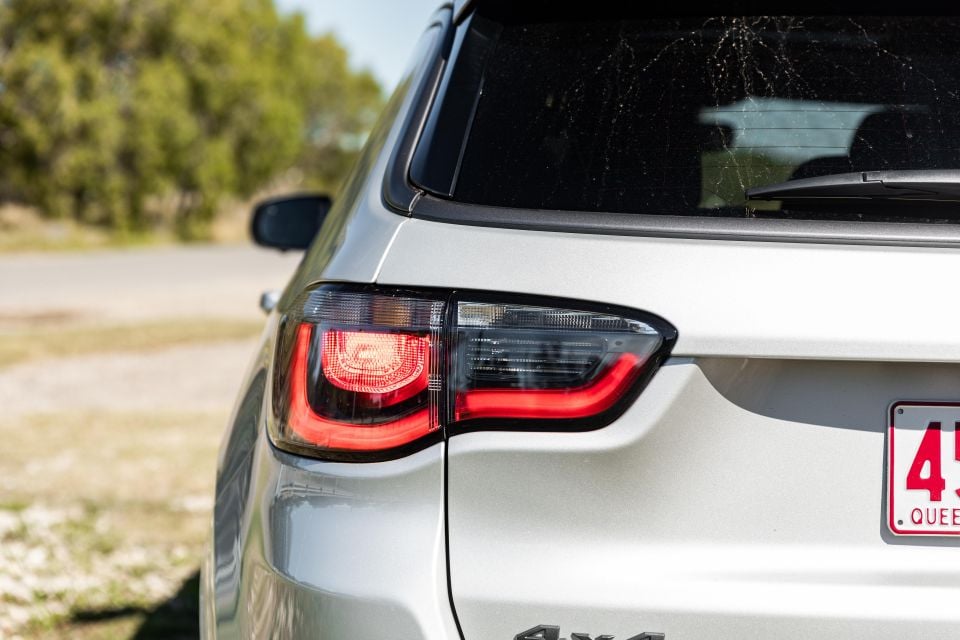
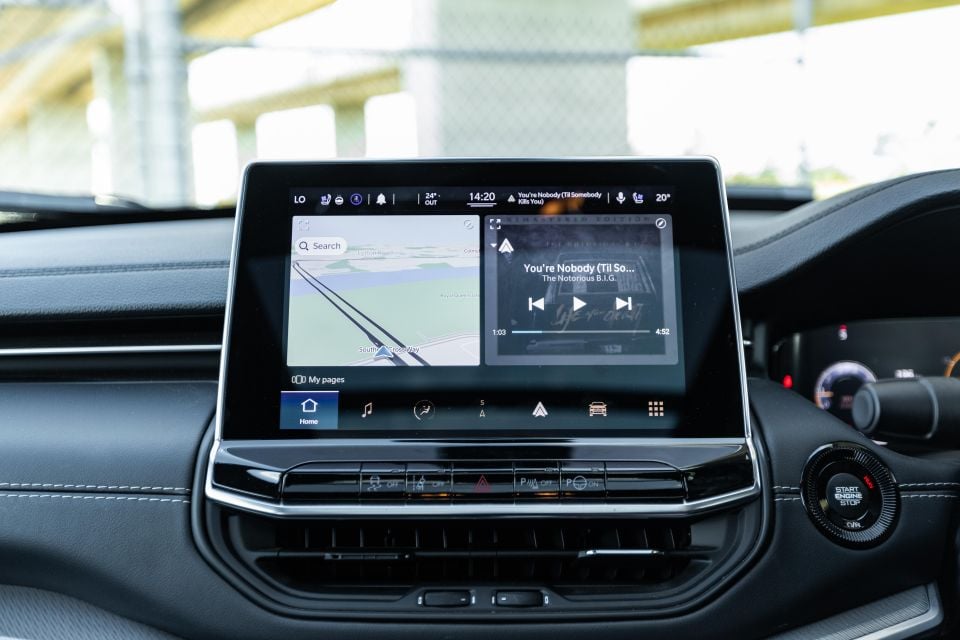
Buy your new car without the stress. It's fast, simple and completely free.

Great service from Travis and team, second time I have used this business would not hesitate to recommend them to anyone
Craig C.
Purchased a Ford Ranger in Sunshine Coast, QLD
CarExpert helped Craig save thousands on his Ford Ranger, now let us save you on your next new car.
Find a dealThe Compass S-Limited wants for nothing. Standard equipment over the Limited one rung down includes:
The optional S-Limited Premium Package adds a panoramic sunroof, surround-view camera, heated steering wheel, as well as heated and ventilated front seats.
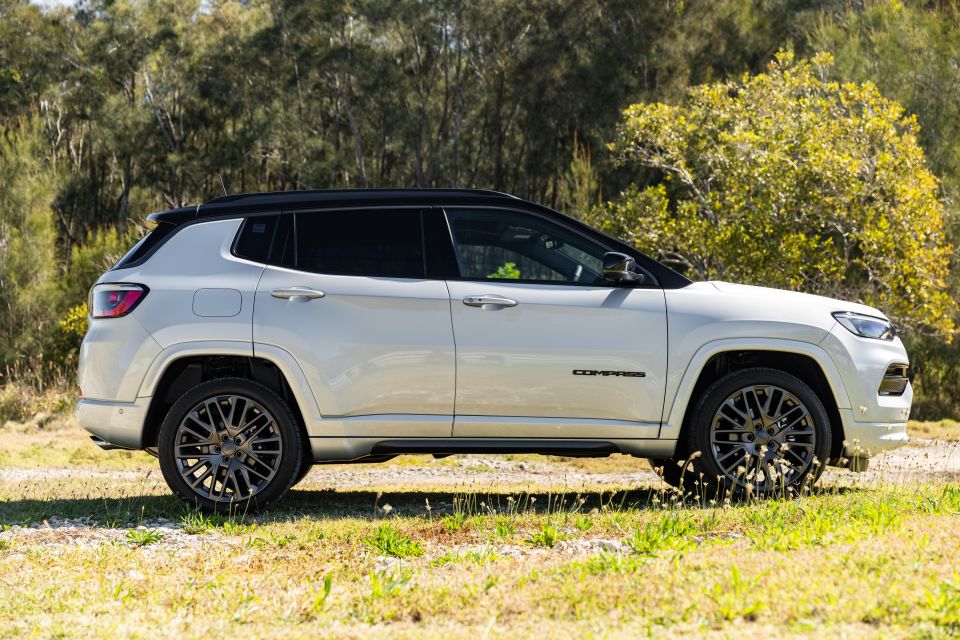
This is in addition to features found lower in the range, such as:
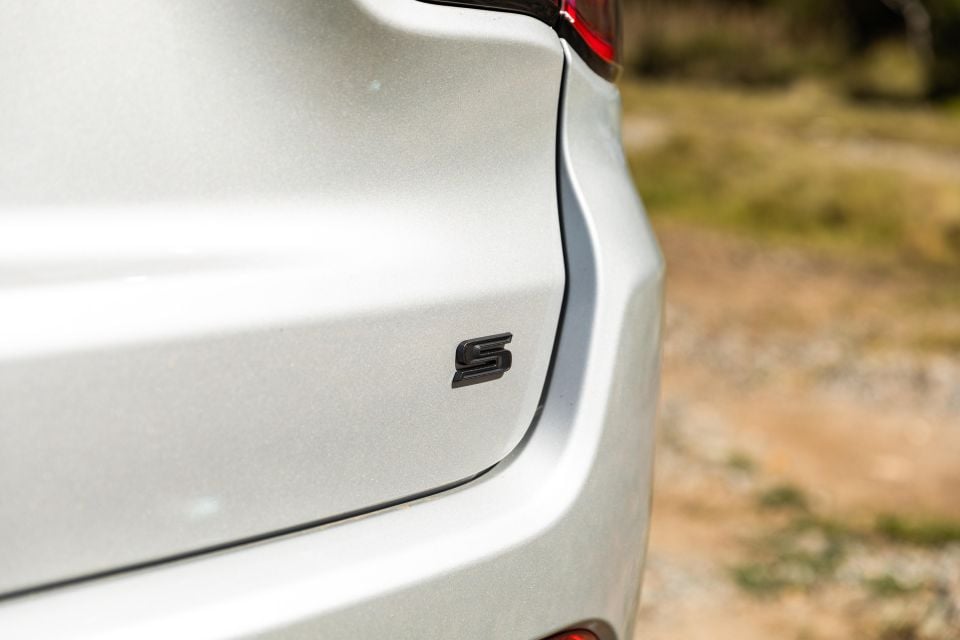
Drop down to the Limited ($43,950 before on-roads), and you still get all-wheel drive, power front seats, the digital instrument cluster, power tailgate and semi-autonomous parking assist.
If you could add the luxury package to that and skip the mostly cosmetic additions of the S-Limited trim, the Compass would still be costly but would stack up slightly better against rivals.
As equipped, the Compass does have one of the larger touchscreens in the segment (the Kona and Seltos are bigger at 10.25 inches) and is one of the few to offer a digital instrument cluster, the Kona and Volkswagen T-Roc also featuring one.
Ventilated seats can only be found in the Kona and Seltos, while a genuine panoramic sunroof and wireless smartphone mirroring are rarities in this segment.
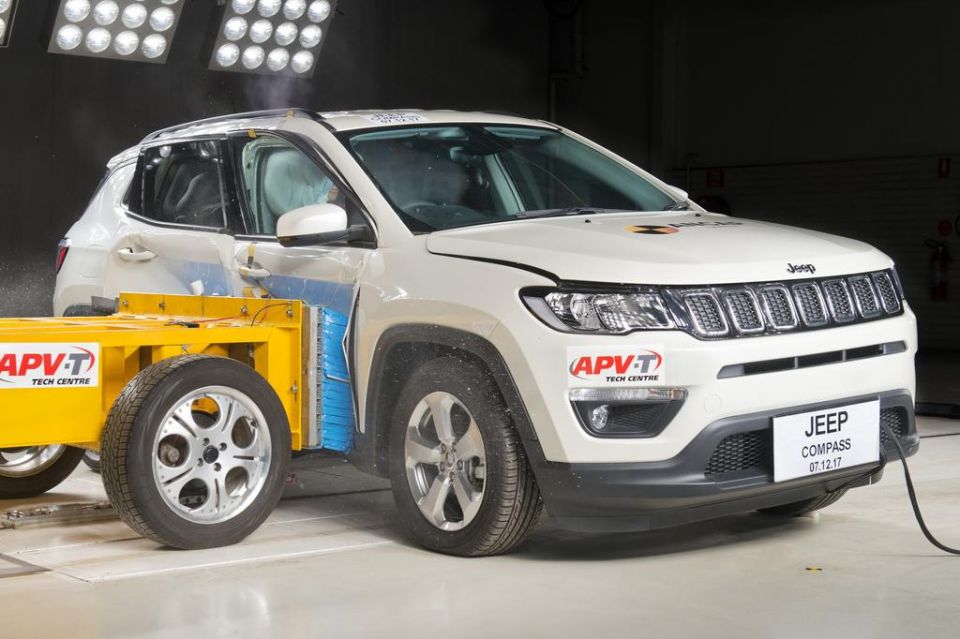
The Jeep Compass has a five-star ANCAP safety rating based on testing conducted in 2017.
That rating was based on a frontal offset score of 14.93 out of 16 and a side impact score of 16 out of 16. Whiplash and pedestrian protection were rated Good and Good, respectively.
All models come with the following safety equipment as standard:
The Compass’ safety equipment received a big boost in 2021, with traffic sign recognition, adaptive cruise control, intelligent speed assist and driver attention monitoring newly added.
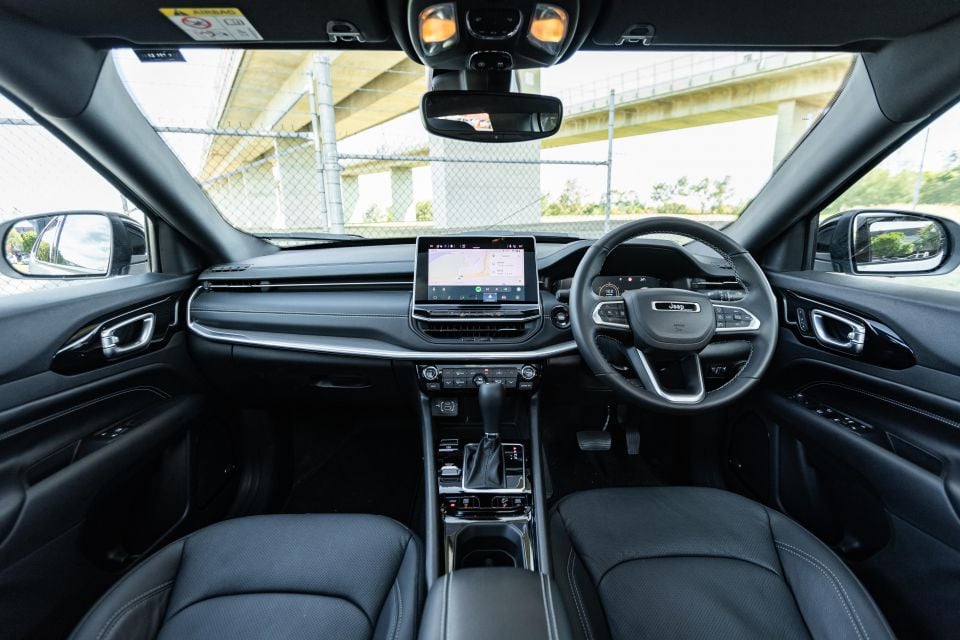
The pre-update Compass interior was average, no more. This update makes it a genuinely nice place to sit, with a completely redesigned dashboard. If you haven’t sat in a Jeep Compass since 2010, you’ll be gobsmacked.
There’s attractive metal-look trim, while the dashboard is swathed with soft-touch plastics with stitching details. The tops of the front doors are finished in soft-touch plastic, while all doors feature leatherette inserts. We’d love to see some leatherette on the sides of the centre console, though.
There are also the ‘hidden’ air vents so in vogue at the moment, giving the dashboard a clean, elegant appearance, while the piano black trim – another trendy item in 2021 – is mercifully kept to a minimum.

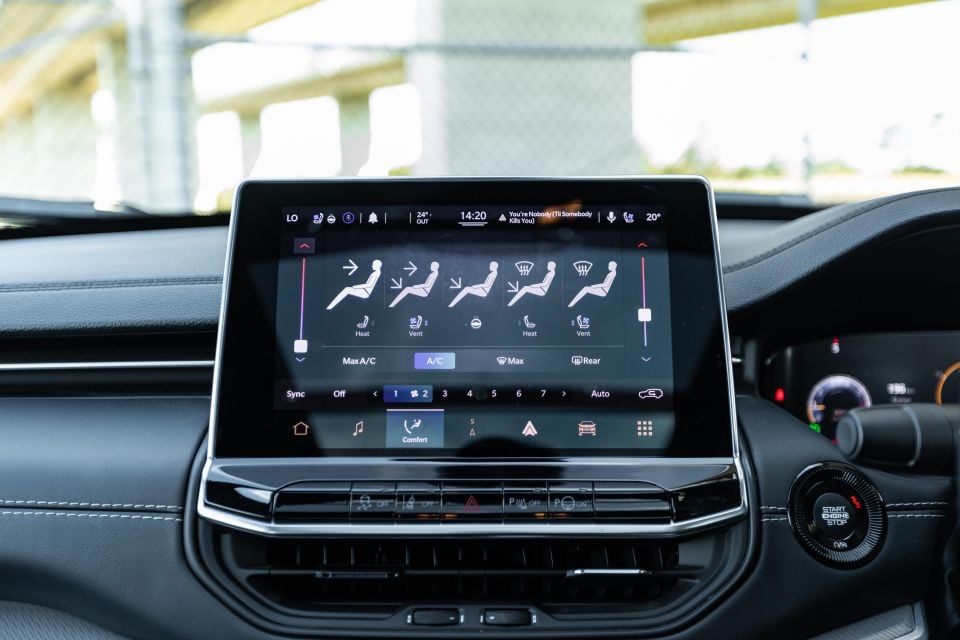
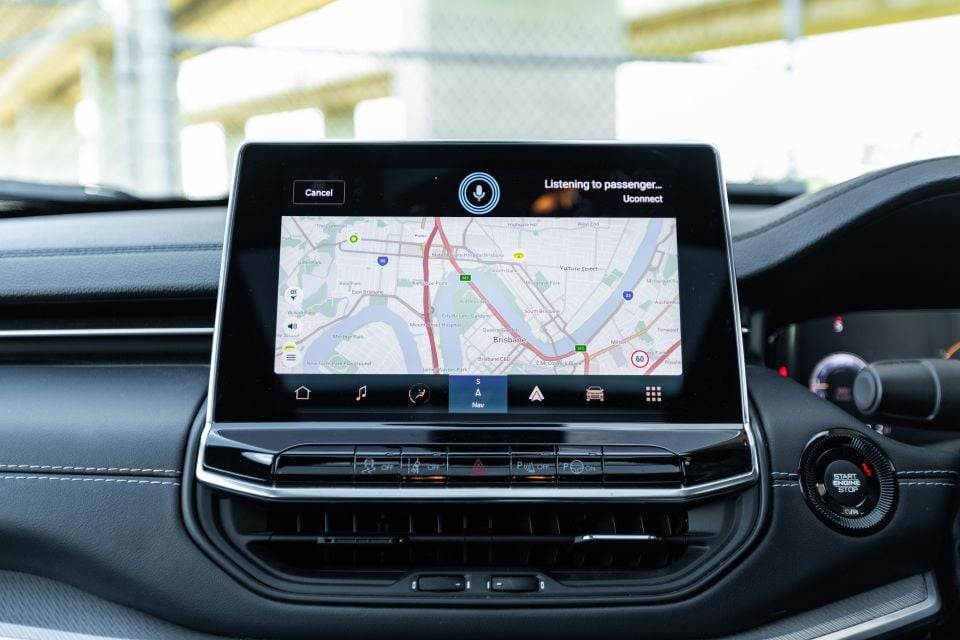
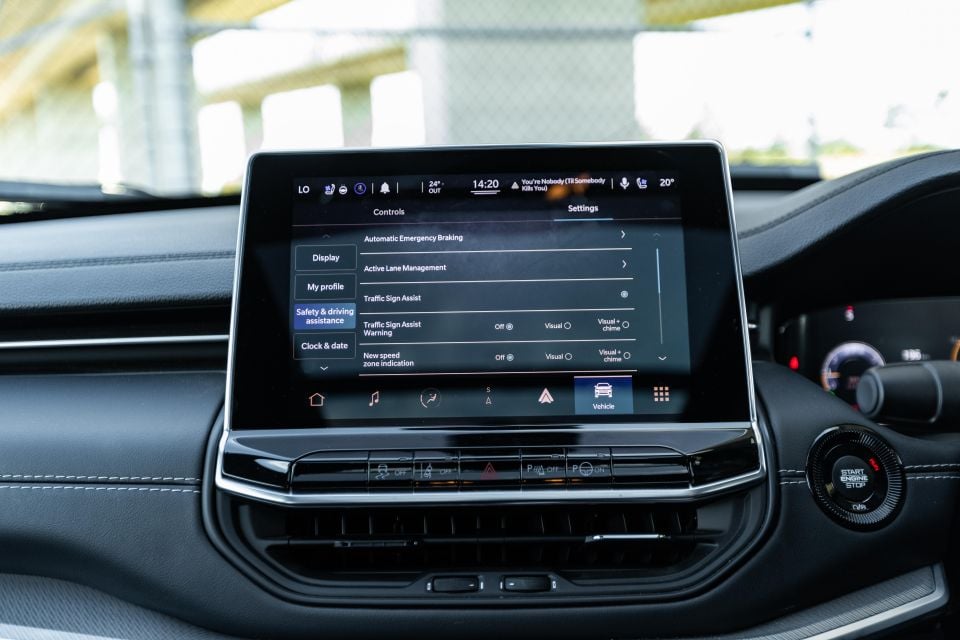
Sitting pride of place on the dashboard is the new 10.1-inch touchscreen running the latest Stellantis infotainment system. The old system was already quite good, but Uconnect 5 elevates the game. It’s easy to navigate, thanks to menu buttons at the bottom of the screen.
Response times are snappy, and it’s quick to recognise and remember your phone for wireless smartphone mirroring. The graphics are also attractive and you can select different themes, while there’s a neat split-screen home page.
You can use “Hey Jeep” or “Hey Uconnect” as a voice prompt, and the prompts generally work quite well unless you’re entering an address.
No combination of speaking slowly, dumbing down the pronunciation, or reading the number differently yielded a positive result as it would with smartphone mirroring.
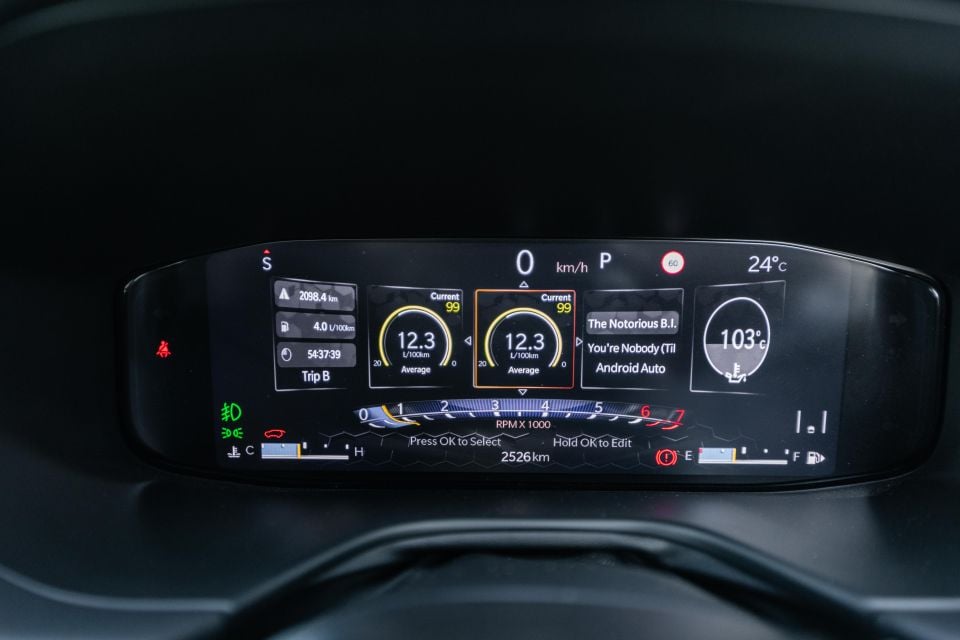

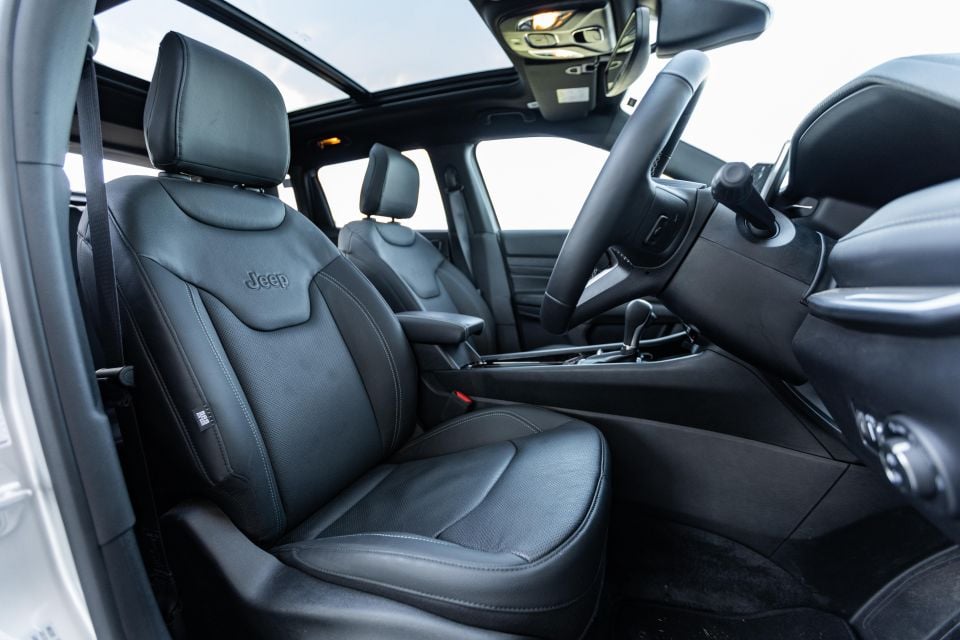
That’s a shame as Uconnect 5 is otherwise superb. We like that Jeep allows you to adjust climate settings via the touchscreen while still maintaining physical switchgear, and you can say things like “I’m feeling warm” and it’ll adjust the temperature. It’ll also suggest nearby petrol stations if you’re low on fuel.
The settings menu is comprehensive, allowing you to change everything from the sensitivity of the lane-keep assist to the intensity of the ambient lighting and whether you want the heated seats and steering wheel to come on automatically.
If you like digital instrument clusters, you’ll likely be pleased with the Compass. It’s a bit utilitarian in appearance but you can choose between multiple views, including one with traditional-looking gauges and one that displays absolutely everything all at once.
I couldn’t figure out how to get my ideal set-up – traditional gauges with a digital speedometer in the middle – but there are plenty of permutations on hand.
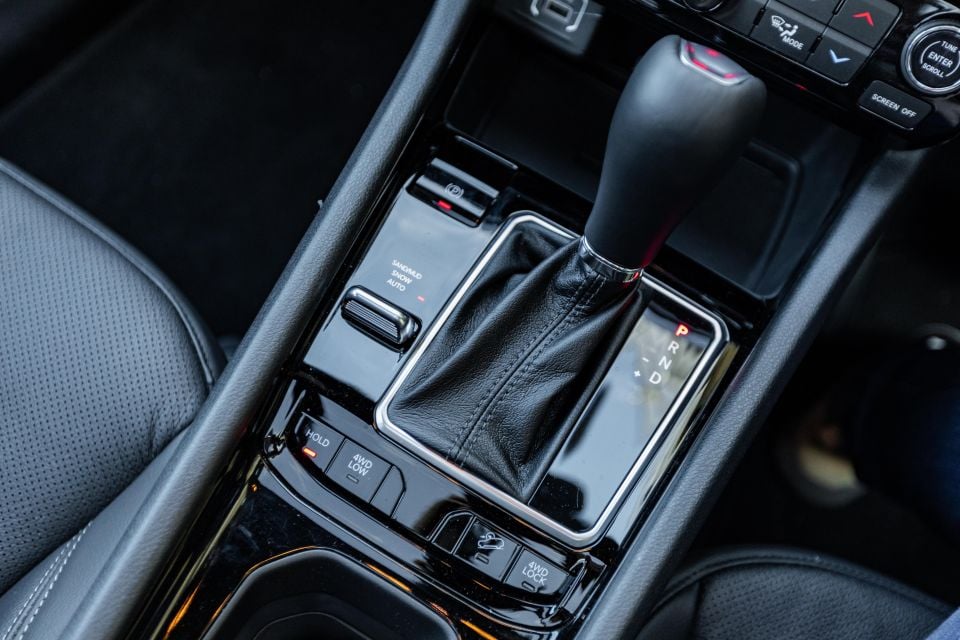
Storage is a mixed bag. There’s a wireless phone charger at the base of the centre stack that can fit large smartphones, plus cupholders, an average-sized glove compartment, and drink holders in the doors that can fit a bottle and a can.
The centre console bin, however, is on the small side. Usefully, there are both USB-A and USB-C outlets up front.
For a small SUV, there’s a spacious back seat with plenty of legroom and knee room; at 180cm, I could sit comfortably behind myself. Only headroom proves an obstacle, with the expansive panoramic sunroof meaning my hair was brushing the roof.
Despite the comfortable rear accommodation, there’s no mistaking this for a mid-size SUV like a RAV4 which feels much roomier in every dimension.
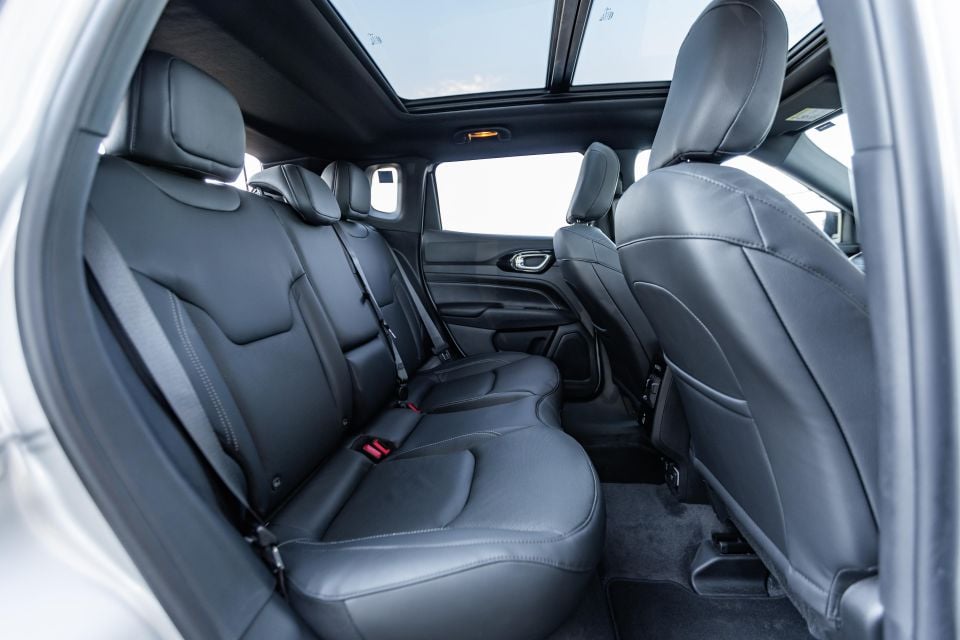
Where expert car reviews meet expert car buying – CarExpert gives you trusted advice, personalised service and real savings on your next new car.
There are plenty of amenities back there. In addition to the expected rear air vents and fold-down armrest with cupholders, there’s a USB-A and a USB-C charger, a 12V outlet, and a 230V outlet.
You won’t find the latter in many rivals’ back seats.
The front seatbacks are also upholstered and include map pockets, while thirsty passengers are well taken care of in the Compass as the doors feature bottle holders.
You’ll also find three top-tether and two outboard ISOFIX anchor points for child seats.
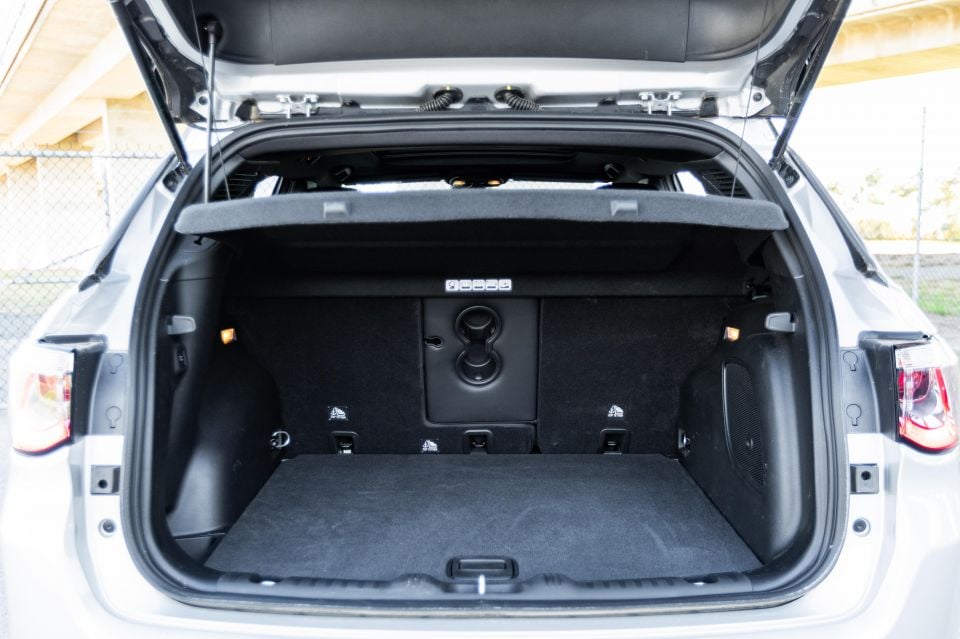
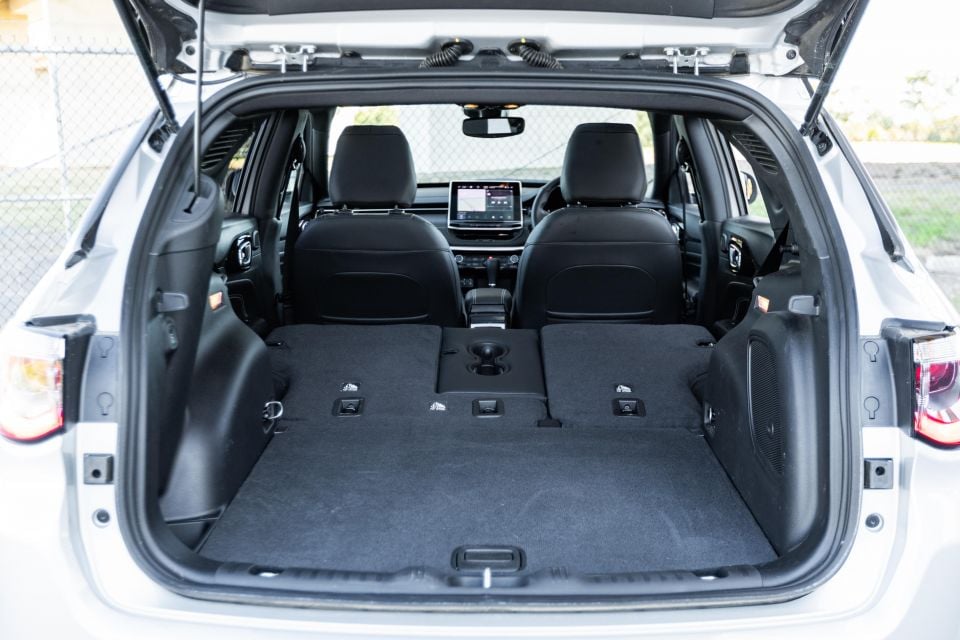
Open the power tailgate and you’ll find 438L of cargo space, making it one of the more spacious boots in the segment. Even the Kia Seltos’s boot is 5L smaller.
Cleverly, for those short of stature, the tailgate close button is located in the left of the boot area. Less cleverly, you need to drop the rear seats to remove the cargo blind.
There was a slight rattle coming from the panoramic sunroof on coarse-chip roads but otherwise the Compass’ interior feels well-assembled.
There’s just one glaring issue that needs to be rectified, and it’s the horrid indicator and washer stalks. There must be a big bin of these leftover from the days of the Dodge Caliber and Jeep is trying to use them all up, because they snap into place and feel brittle and cheap.
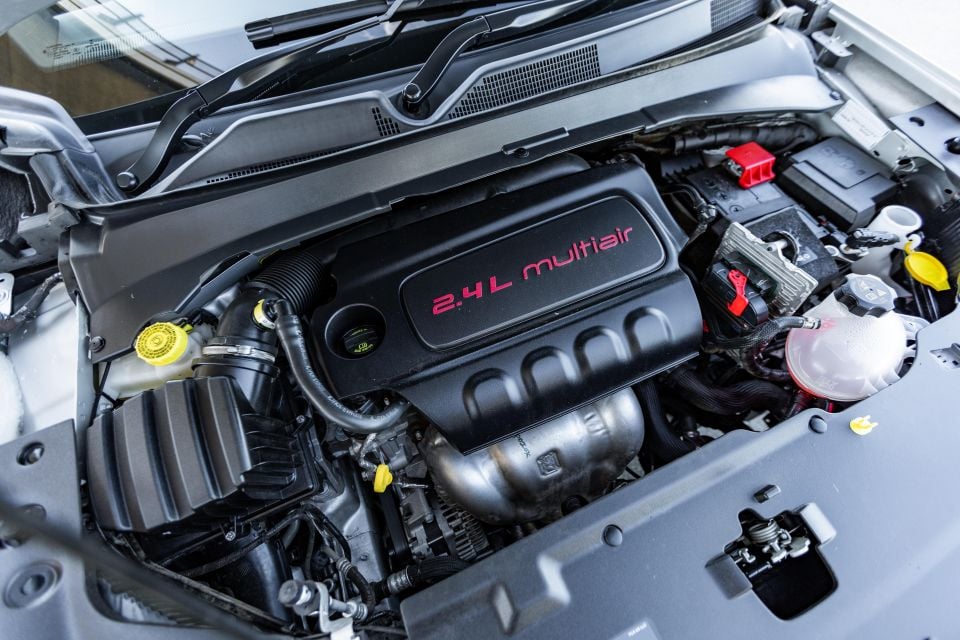
All Compass models bar the Trailhawk are powered by a naturally-aspirated 2.4-litre four-cylinder petrol engine called the ‘Tigershark’. Despite that aggressive name, its outputs are modest: 129kW of power at 6400rpm and 229Nm of torque at 3900rpm.
It’s mated to a nine-speed torque-converter automatic transmission, with power sent to all four wheels via Jeep’s Active Drive Low 4×4 system.
This system includes a one-speed transfer case, hill descent control and drive modes for snow, sand and mud. There’s also a selectable 4WD Low mode, which locks the transmission in first gear.
That doesn’t make this as rugged as a Wrangler, or even a Compass Trailhawk which has the same system but more ground clearance, but it means the Compass has greater ability than many rival crossovers.
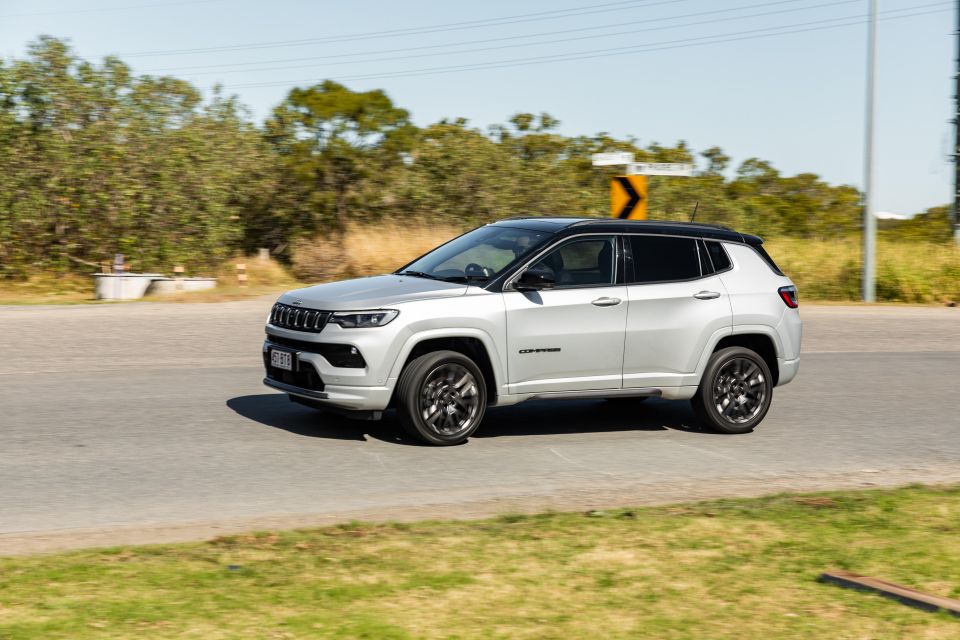
The Tigershark engine is the most recent of a line of engines developed as part of the Global Engine Alliance between Chrysler, Hyundai and Mitsubishi. It’s been improved over time, though it’s scarcely gotten any more powerful and in this application it isn’t particularly economical.
At least it sounds better than a Chrysler 200 I rented in the US a few years back. We wouldn’t call it a sporty engine note, but this is a relatively pleasant four-cylinder soundtrack.
That’s good as you have to work this engine a bit hard sometimes – it has a claimed 0-100km/h time of 10.1 seconds, and our seat of the pants impressions suggest that’s accurate.
The Compass is unflappable, even on a spirited drive on some wet mountain roads. Handling is stable and predictable, there are high levels of grip, and body roll and understeer are well-controlled. The steering is direct but a touch light, while the wheel feels a bit large.
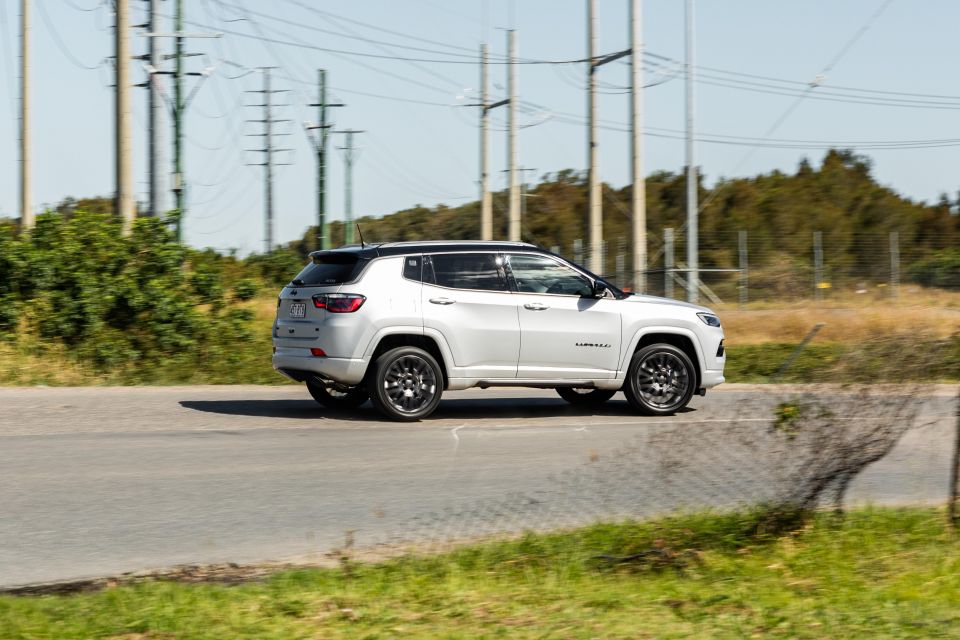
You get the feeling there’s a decent chassis underneath that needs to be exploited with a better engine. Indeed, on that wet weekend drive the Compass felt slower than a wet weekend, constantly shuffling down to a lower gear to summon up the grunt to rise over the next crest.
Nobody’s expecting a small SUV to be a rocket, but when there are turbocharged rivals like the Kona and Seltos on the market…
At least the general competence of the chassis bodes well for the upcoming Alfa Romeo Tonale, reported to be using a version of this platform. And the Compass does feel much more at home in the day-to-day commute, where there’s sufficient if not surplus power on tap.
The nine-speed automatic transmission is generally competent, though shifts between first and second and back were occasionally surprisingly abrupt. Despite the abundance of gears, the Compass doesn’t feel like it’s constantly shuffling around in day-to-day driving.
There’s no sport mode or paddle shifters. Instead, you’ll find the volume and skip track buttons behind the steering wheel where paddles would be on most rivals. You can put the Compass in manual mode, but that requires you to knock the shifter to the left, not the right.
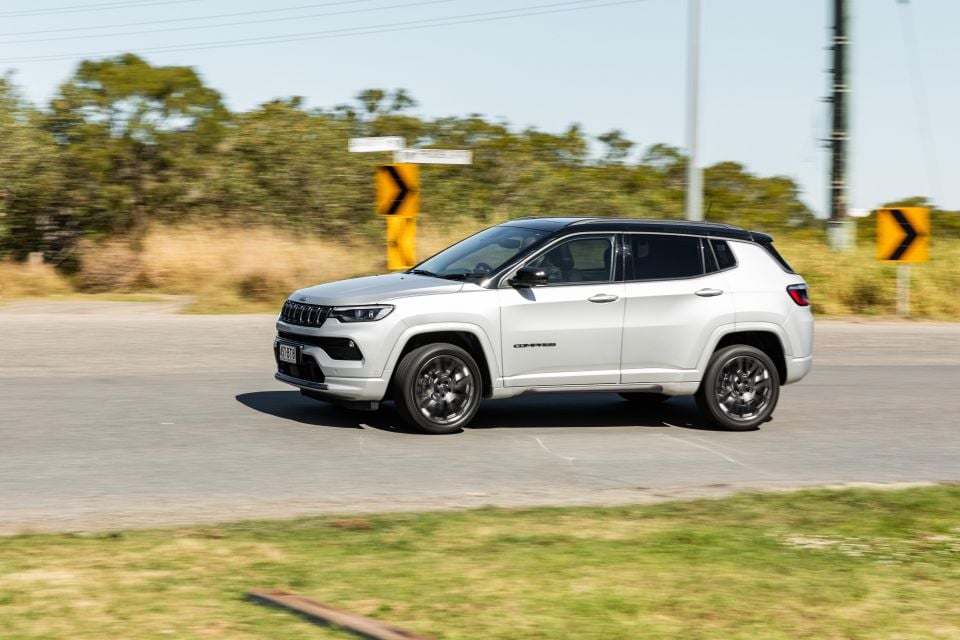
On the highway, the Compass is quiet and comfortable with wind and tyre noise kept to a minimum. There’s a bit of tyre roar on coarser chip surfaces, but the Jeep is generally quite refined.
That also applies to the ride quality, which smoothes the worst of the bumps and ruts you’ll find on Australia’s craggly urban roads. It’s also comfortable on unsealed roads, where it feels planted and stable.
We like how easy it is to adjust driver assist settings via the touchscreen. The lane-keep assist system menu, for example, allows you to choose how early you want it to intervene, whether you want steering assist, and how strong you want that assist.
It’s a pity, then, the system feels too erratic even on its mildest settings. You feel no assistance and then too much, too quickly, and it doesn’t feel reliable enough for you to really lean on it during highway driving.

It has the confidence of a nervous driver, and sometimes it feels like the wheel is yanking you one way while the lane is going another. I personally couldn’t find a setting I liked, but fortunately there’s a hard button to turn the system off entirely.
If there’s one thing we wish we could tailor more via the settings menu, it’s the blind-spot monitoring.
You can have a visual or audible alert, or both, but the audible alert is extremely loud. That’s unnecessary when, as like most blind-spot systems, it’s set off by being in one of two turning lanes about to pass through an intersection.
While the forward collision warning was overly sensitive (and loud!) even in its mildest setting, we experienced no issues of note with the adaptive cruise control. If for some reason you want to use regular cruise control, there are buttons for that as well on the steering wheel.
In all, the Compass is competent on-road but no more.
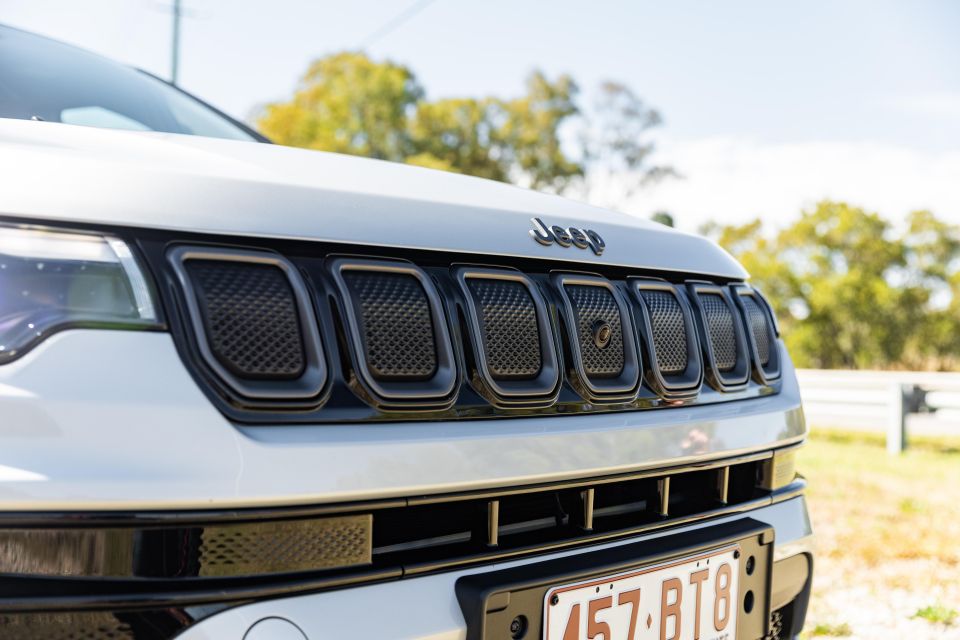
For a small SUV that isn’t particularly sprightly, the Compass sure is thirsty.
It’s rated at 9.7L/100km on the combined cycle in S-Limited guise, 1.8L/100km more than the front-wheel drive Launch Edition.
Over our test loop, comprising a mix of inner-city, suburban and highway driving, we averaged 9.4L/100km.
That’s worse than some larger SUVs we’ve driven in the same environment, like the Nissan X-Trail Ti AWD (9.0L/100km) and Subaru Forester 2.5i Sport (8.8L/100km), though at least our real-world experience closely matches the claim.
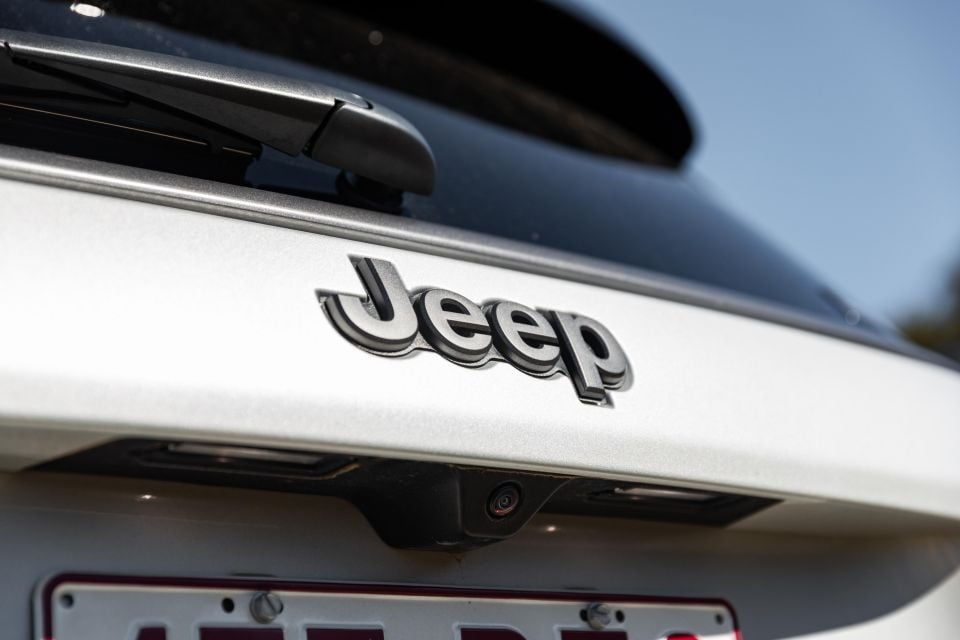
Over the course of a week with the Compass, fuel economy increased to 10.5L/100km. Around town, it was sitting at around 12L/100km before we went on a couple more highway jaunts.
Servicing is required every 12 months or 12,000km, with the first five services capped at $399 each.
Jeep used to charge between $425 and $695 for these services, but reined in pricing for 2020. It’s much more reasonable than before, if not quite Ford and Toyota cheap.
Jeep covers the Compass with a five-year, 100,000km warranty. That’s starting to look average when many rivals offer five- or seven-year, unlimited-kilometre warranties, with Mitsubishi even offering a 10-year, 200,000km warranty if you service within their dealer network.
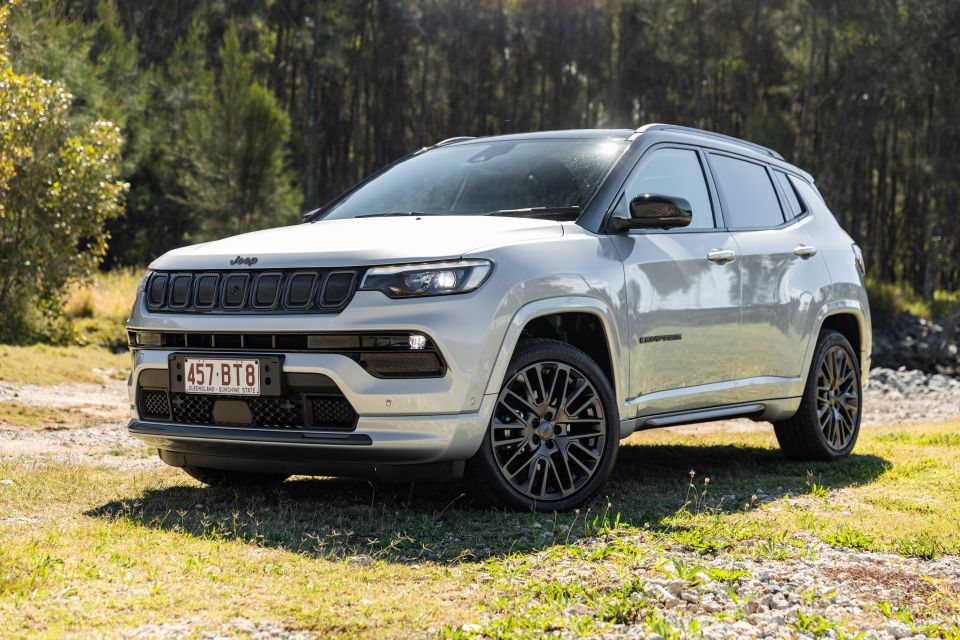
While a Grand Cherokee can offer a more car-like driving experience than some rivals and a Wrangler can offer inimitable Jeep style, the Compass doesn’t stand out in any particular way.
If you’re going to charge thousands more than similarly-sized rivals, you need to have some kind of X-factor. If Jeep is relying on its badge for that, we don’t think that’ll help the Compass rise from its lowly position in the sales charts.
Perhaps if it had the turbocharged 2.0-litre petrol available in the Cherokee overseas, or the 4xe plug-in hybrid powertrain it might make more of an impression at this price point.
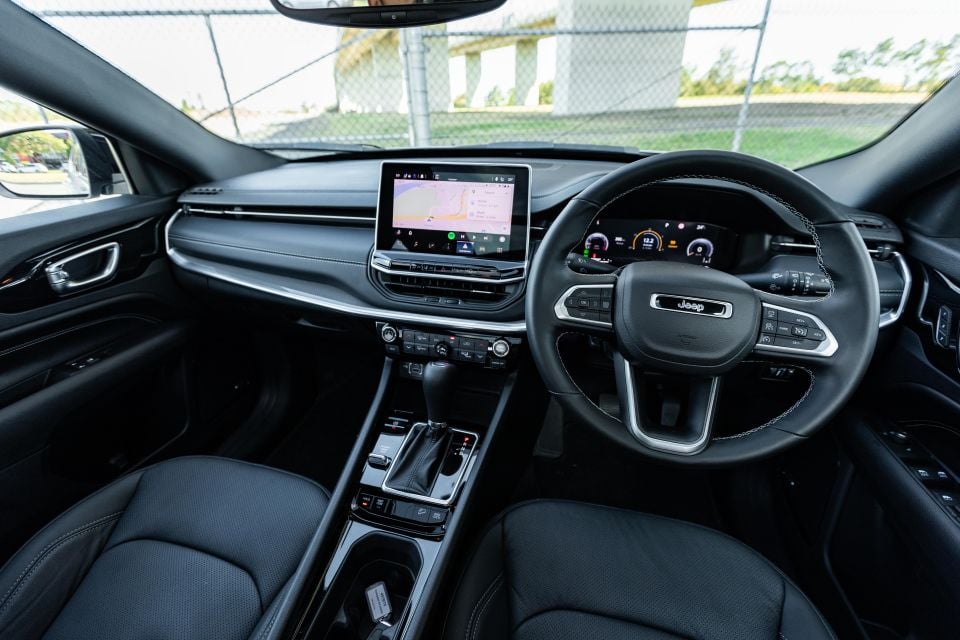
As it stands, it’s a dynamically average small SUV priced like a mid-sizer, albeit with one of the nicer interiors on the market.
In a way, Jeep’s strategy for the Compass mirrors that of fellow Stellantis brand Peugeot’s SUVs which are also well-equipped but pricey. Those models have a distinctive design to offer, however, while the Compass is handsome but not terribly memorable.
It has a fairly large interior for a small SUV plus a long list of standard equipment, but so does a cheaper Kia Seltos GT-Line. There’s perhaps a little more off-road ability than other similarly-priced SUVs, but you’ll also find that in the larger, cheaper Subaru Forester 2.5i-S.
We could go on. Ultimately, this is a broadly competent SUV that doesn’t do much glaringly wrong, high fuel consumption aside. It’s just too expensive.

Click the images for the full gallery
MORE: Everything Jeep Compass
Where expert car reviews meet expert car buying – CarExpert gives you trusted advice, personalised service and real savings on your next new car.
William Stopford is an automotive journalist with a passion for mainstream cars, automotive history and overseas auto markets.


Max Davies
15 Hours Ago


William Stopford
15 Hours Ago


Derek Fung
16 Hours Ago


Max Davies
23 Hours Ago


William Stopford
2 Days Ago


Ben Zachariah
2 Days Ago